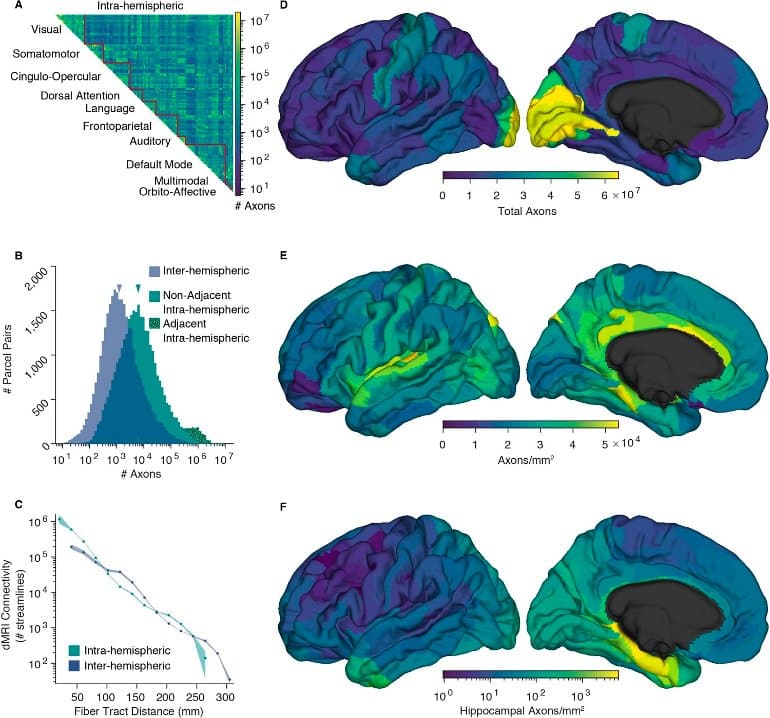Summary: Study reveals axon density is lower than previously believed between distant regions of the brain.
Source: PLOS
Understanding how the brain functions, particularly how information is processed during different activities, is difficult without knowing how many axons are in the brain and how many connect different functional regions.
An approach by Burke Rosen and Eric Halgren at the University of California, San Diego, U.S. published March 24 in the open-access journal PLOS Biology, shows that despite the functional importance of connections between far-reaching regions of the brain, the actual number of these connections is low.
In the new study, researchers combined diffusion MRI data from the Human Connectome Project with histological cross-sections of the corpus callosum, the major tract that connects the left and right sides of the brain.
The Human Connectome maps the strength of all connections in the brain but does not provide the actual number of axons, while the histological cross-sections allow estimates for how many axons are packed into a given volume.
Combining the connection strengths with the axon densities yielded estimates for the number of axons in the cerebral cortex.
The analysis indicated that there are almost 2.5 billion long-range axons traversing the cerebral cortex.

However, despite this large number, they found that the numbers connecting different functional brain regions were quite low. For example, among the estimated 130 million axons in the arcuate fasciculus tract, only about 1 to 2 million (less than 2%) directly connected Broca’s and Wernicke’s areas, a connection that is necessary for normal language ability.
The model predicts that other long connections, like those from the hippocampus to the frontal cortex that are needed for memory retrieval, are actually made in multiple steps.
The findings will thus improve models of cognition, especially processes that rely on connections between distal regions of the brain.
“A major unsolved problem is how the human cortex integrates information processing by its 16 billion neurons across its surface to unify awareness,” Rosen adds.
“Our finding that cortical areas are sparsely connected implies that this integration is accomplished either via linkage of the dense local connections or by rare, extraordinarily privileged long-range axons.”
About this neuroscience research news
Author: Press Office
Source: PLOS
Contact: Press Office – PLOS
Image: The image is credited to the researchers
Original Research: Open access.
“An estimation of the absolute number of axons indicates that human cortical areas are sparsely connected” by Burke Q. Rosen et al. PLOS Biology
Abstract
An estimation of the absolute number of axons indicates that human cortical areas are sparsely connected
The tracts between cortical areas are conceived as playing a central role in cortical information processing, but their actual numbers have never been determined in humans.
Here, we estimate the absolute number of axons linking cortical areas from a whole-cortex diffusion MRI (dMRI) connectome, calibrated using the histologically measured callosal fiber density.
Median connectivity is estimated as approximately 6,200 axons between cortical areas within hemisphere and approximately 1,300 axons interhemispherically, with axons connecting functionally related areas surprisingly sparse. For example, we estimate that <5% of the axons in the trunk of the arcuate and superior longitudinal fasciculi connect Wernicke’s and Broca’s areas.
These results suggest that detailed information is transmitted between cortical areas either via linkage of the dense local connections or via rare, extraordinarily privileged long-range connections.






